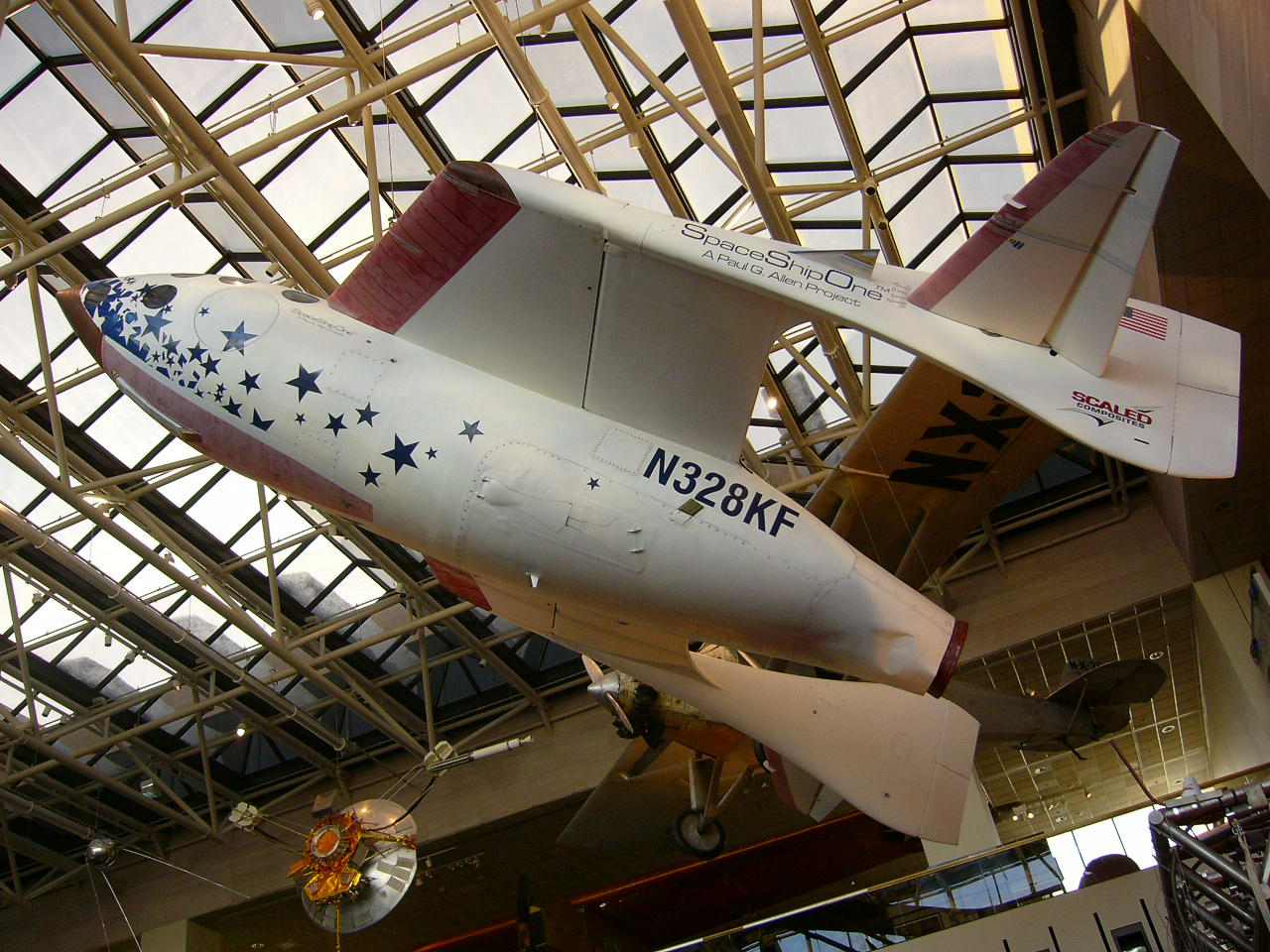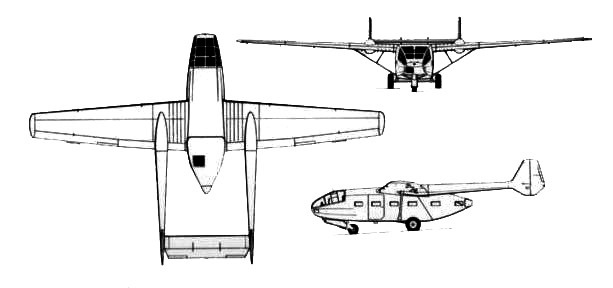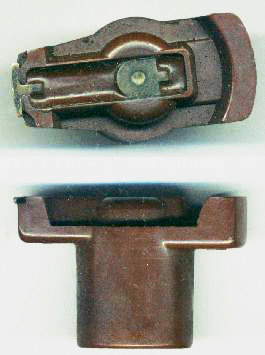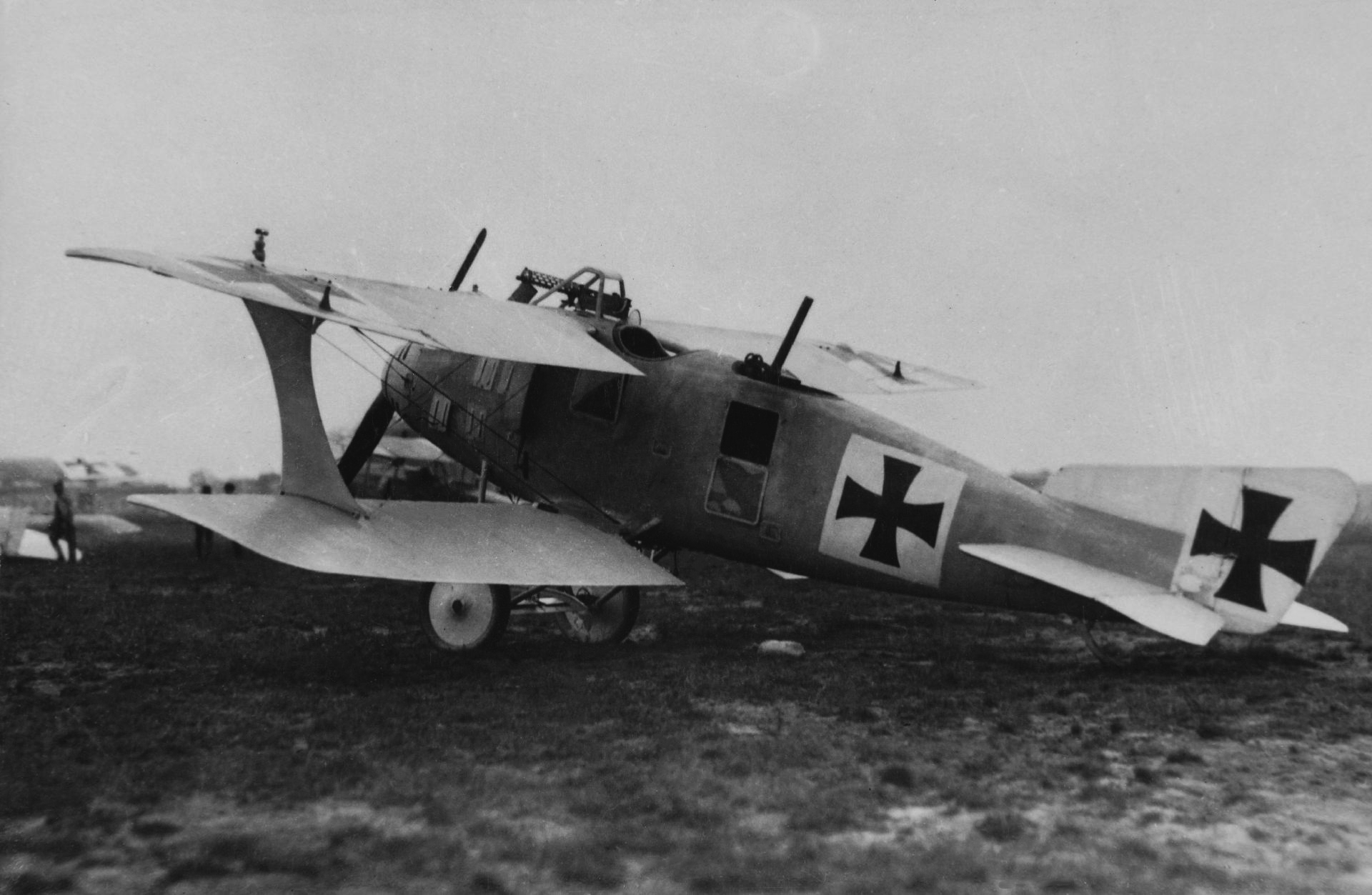|
Twin Boom
A twin-boom aircraft has two longitudinal auxiliary spars, or “auxiliary booms” , that may contain ancillary components such as fuel tanks and/or provide a supporting structure for other items. Typically, twin tailbooms support the tail surfaces, although on some types such as the Rutan Model 72 Grizzly the booms run forward of the wing. The twin-boom configuration is distinct from twin-fuselage designs in that it retains a central fuselage. Design The twin-boom configuration is distinct from the twin fuselage type in having a separate, short fuselage housing the pilot and payload. It has been adopted to resolve various design problems with the conventional empennage for aircraft in different roles. Engine mounting For a single engine with a propeller in the pusher configuration or a jet engine, a conventional tail requires the propeller or exhaust to be moved far aft, requiring either a very long driveshaft or jet pipe and thus reducing propulsive efficiency. The t ... [...More Info...] [...Related Items...] OR: [Wikipedia] [Google] [Baidu] |
434th TCW Bakalar Air Force Base C-119
434th may refer to: *434th Air Refueling Wing, one of the key refueling units in the US Air Force Reserve *434th Bombardment Squadron, an inactive United States Air Force unit *434th Fighter Training Squadron (434 FTS), part of the 47th Flying Training Wing based at Laughlin Air Force Base, Texas *434th Operations Group, an active United States Air Force Reserve unit See also *434 (number) *434, the year 434 (CDXXXIV) of the Julian calendar *434 BC {{mil-unit-dis ... [...More Info...] [...Related Items...] OR: [Wikipedia] [Google] [Baidu] |
Outboard Tail
An outboard tail is a type of aircraft tail or empennage which is split in two, with each half mounted on a short boom just behind and outboard of each wing tip. It comprises outboard horizontal stabilizers (OHS) and may or may not include additional boom-mounted vertical stabilizers (fins). OHS designs are sometimes described as a form of tailless aircraft. The outboard tail surfaces are positioned so that they interact constructively with the wingtip vortices to significantly reduce drag, without causing undue structural or handling difficulties. Characteristics An outboard tail is located outboard of the main wing tips. Although sometimes described as tailless aircraft, tailless, the outboard tail configuration differs from a tailless wing in that the horizontal stabilizer is discontinuous from the main wing surface, typically being set further back and requiring a short boom to support it. If the wing is swept, then the boom can be very short and the front of the tail may ove ... [...More Info...] [...Related Items...] OR: [Wikipedia] [Google] [Baidu] |
Gotha Go 242
The Gotha Go 242 was a transport glider used by the ''Luftwaffe'' during World War II. It was an upgrade over the DFS 230 in both cargo/troop capacity and flight characteristics. It saw limited combat action. There were multiple glider variants, and it became the basis for a transport aircraft, the: Gotha Go 244. Development The Go 242 was designed by Dipl-Ing Albert Kalkert in response to a '' Reichsluftfahrtministerium'' (RLM) requirement for a heavy transport glider to replace the DFS 230 then in service. The requirement was for a glider capable of carrying 20 fully laden troops or the equivalent cargo. The aircraft was a high-wing monoplane with a simple square-section fuselage ending in clamshell doors used to load cargo. The empennage was mounted on twin booms linked by a tailplane. The fuselage was formed of steel tubing covered with doped fabric. The flight characteristics of the design were better than those of the DFS 230. Cargo versions of the glider featured a ... [...More Info...] [...Related Items...] OR: [Wikipedia] [Google] [Baidu] |
Aluminium
Aluminium (or aluminum in North American English) is a chemical element; it has chemical symbol, symbol Al and atomic number 13. It has a density lower than that of other common metals, about one-third that of steel. Aluminium has a great affinity towards oxygen, passivation (chemistry), forming a protective layer of aluminium oxide, oxide on the surface when exposed to air. It visually resembles silver, both in its color and in its great ability to reflect light. It is soft, magnetism, nonmagnetic, and ductility, ductile. It has one stable isotope, 27Al, which is highly abundant, making aluminium the abundance of the chemical elements, 12th-most abundant element in the universe. The radioactive decay, radioactivity of aluminium-26, 26Al leads to it being used in radiometric dating. Chemically, aluminium is a post-transition metal in the boron group; as is common for the group, aluminium forms compounds primarily in the +3 oxidation state. The aluminium cation Al3+ ... [...More Info...] [...Related Items...] OR: [Wikipedia] [Google] [Baidu] |
Bakelite
Bakelite ( ), formally , is a thermosetting polymer, thermosetting phenol formaldehyde resin, formed from a condensation reaction of phenol with formaldehyde. The first plastic made from synthetic components, it was developed by Belgian chemist Leo Baekeland in Yonkers, New York, in 1907, and patented on December 7, 1909. Bakelite was one of the first plastic-like materials to be introduced into the modern world and was popular because it could be Molding (process), molded and then hardened into any shape. Because of its electrical nonconductor, nonconductivity and heat-resistant properties, it became a great commercial success. It was used in electrical insulators, radio and telephone casings, and such diverse products as kitchenware, jewelry, pipe stems, children's toys, and firearms. The retro appeal of old Bakelite products has made them collectible. The creation of a synthetic plastic was revolutionary for the chemical industry, which at the time made most of its income f ... [...More Info...] [...Related Items...] OR: [Wikipedia] [Google] [Baidu] |
Nieuport Pusher
Nieuport, later Nieuport-Delage, was a French aeroplane company that primarily built racing aircraft before World War I and fighter aircraft during World War I and between the wars. History Beginnings Originally formed as Nieuport-Duplex in 1902 for the manufacture of engine components the company was reformed in 1909 as the Société Générale d'Aéro-locomotion, and its products were marketed to the aviation industry, including ignition components. During this time they built their first aircraft, a small single-seat pod and boom monoplane. This was destroyed shortly after having been flown successfully, during the Great Flood of Paris in 1909 . A second design flew before the end of 1909 and had the essential form of modern aircraft, including an enclosed fuselage with the pilot protected from the slipstream and a horizontal tail whose aerodynamic force acted downwards, balancing the weight of the engine ahead of the centre of gravity, as opposed to upwards as on contempo ... [...More Info...] [...Related Items...] OR: [Wikipedia] [Google] [Baidu] |
Monocoque
Monocoque ( ), also called structural skin, is a structural system in which loads are supported by an object's external skin, in a manner similar to an egg shell. The word ''monocoque'' is a French term for "single shell". First used for boats, a true monocoque carries both tensile and compressive forces within the skin and can be recognised by the absence of a load-carrying internal frame. Few metal aircraft other than those with milled skins can strictly be regarded as pure monocoques, as they use a metal shell or sheeting reinforced with frames riveted to the skin, but most wooden aircraft are described as monocoques, even though they also incorporate frames. By contrast, a semi-monocoque is a hybrid combining a tensile stressed skin and a compressive structure made up of longerons and ribs or frames. Other semi-monocoques, not to be confused with true monocoques, include vehicle unibodies, which tend to be composites, and inflatable shells or balloon tanks, both of whi ... [...More Info...] [...Related Items...] OR: [Wikipedia] [Google] [Baidu] |
World War I
World War I or the First World War (28 July 1914 – 11 November 1918), also known as the Great War, was a World war, global conflict between two coalitions: the Allies of World War I, Allies (or Entente) and the Central Powers. Fighting took place mainly in European theatre of World War I, Europe and the Middle Eastern theatre of World War I, Middle East, as well as in parts of African theatre of World War I, Africa and the Asian and Pacific theatre of World War I, Asia-Pacific, and in Europe was characterised by trench warfare; the widespread use of Artillery of World War I, artillery, machine guns, and Chemical weapons in World War I, chemical weapons (gas); and the introductions of Tanks in World War I, tanks and Aviation in World War I, aircraft. World War I was one of the List of wars by death toll, deadliest conflicts in history, resulting in an estimated World War I casualties, 10 million military dead and more than 20 million wounded, plus some 10 million civilian de ... [...More Info...] [...Related Items...] OR: [Wikipedia] [Google] [Baidu] |
Virgin Atlantic GlobalFlyer
The Scaled Composites Model 311 Virgin Atlantic GlobalFlyer (Aircraft registration, registered N277SF) is an aircraft designed by Burt Rutan in which Steve Fossett first flew a solo nonstop airplane flight around the world in slightly more than 67 hours (2 days 19 hours) in 2005. The flight speed of set the world record for the fastest nonstop non-refueled circumnavigation, beating the mark set by the previous Rutan-designed Rutan Voyager, Voyager aircraft at 9 days 3 minutes with an average speed of . The aircraft was owned by the pilot Steve Fossett, sponsored by Richard Branson's Virgin Atlantic airline, and built by Burt Rutan's company, Scaled Composites. The two companies subsequently worked together on Virgin Galactic. In February 2006, Fossett flew the GlobalFlyer for the longest aircraft flight distance in history: . Design and construction The GlobalFlyer was specifically designed to make an uninterrupted (non-refueled) circumnavigation of the globe with a single ... [...More Info...] [...Related Items...] OR: [Wikipedia] [Google] [Baidu] |
Canard (aeronautics)
In aeronautics, a canard is a wing configuration in which a small forewing or foreplane is placed forward of the main wing of a fixed-wing aircraft or a weapon. The term "canard" may be used to describe the aircraft itself, the wing configuration, or the foreplane.Clancy, L. J. (1975). ''Aerodynamics'', Pitman (UK), Halsted (US), 1975. Pages 292-3.. Canard wings are also extensively used in guided missiles and smart bombs. The term "canard" arose from the appearance of the Santos-Dumont 14-bis of 1906, which was said to be reminiscent of a duck (''canard'' in French) with its neck stretched out in flight. Despite the use of a canard surface on the first powered aeroplane, the Wright Flyer of 1903, canard designs were not built in quantity until the appearance of the Saab Viggen jet fighter in 1967. The aerodynamics of the canard configuration are complex and require careful analysis. Rather than use the conventional tailplane configuration found on most aircraft, an a ... [...More Info...] [...Related Items...] OR: [Wikipedia] [Google] [Baidu] |
Rutan Voyager
The Rutan Model 76 Voyager was the first aircraft to fly around the world without stopping or refueling. It was piloted by Dick Rutan and Jeana Yeager. The flight took off from Edwards Air Force Base's 15,000 foot (4,600 m) runway in the Mojave Desert on December 14, 1986, and ended 9 days, 3 minutes and 44 seconds later on December 23, setting a flight endurance record. The aircraft flew westbound 26,366 statute miles (42,432 km; the FAI accredited distance is 40,212 km) at an average altitude of 11,000 feet (3,350 m). Design and development The aircraft was first imagined by Burt Rutan and his brother Dick Rutan in 1980. Burt sketched his concept for the aircraft for Dick and Jeana Yeager during a lunch in 1981. The idea was sketched out on the back of a napkin. Voyager was built in Mojave, California over a period of five years, mainly by volunteers working under both the Rutan Aircraft Factory and an organization named Voyager Aircraft. Burt Rutan ser ... [...More Info...] [...Related Items...] OR: [Wikipedia] [Google] [Baidu] |








